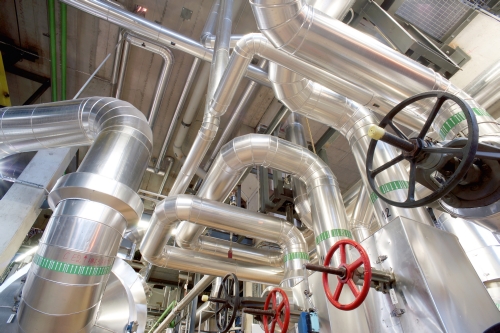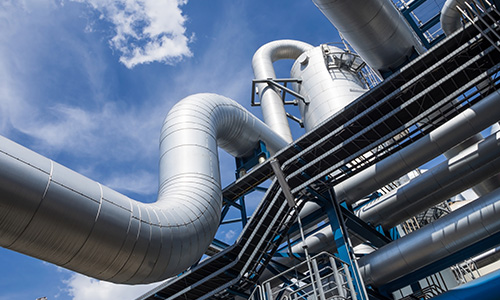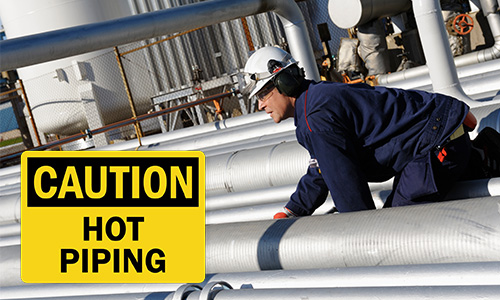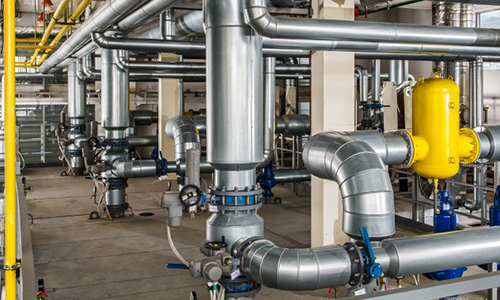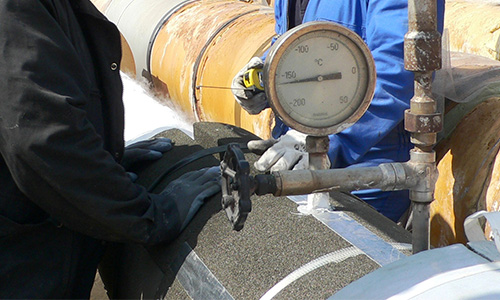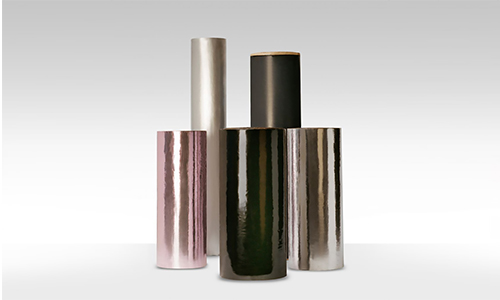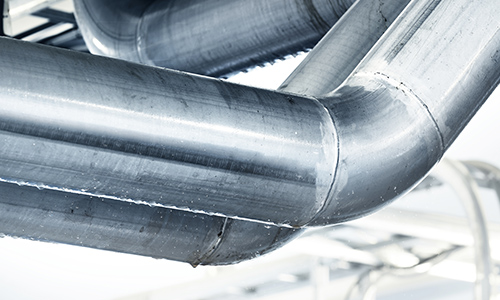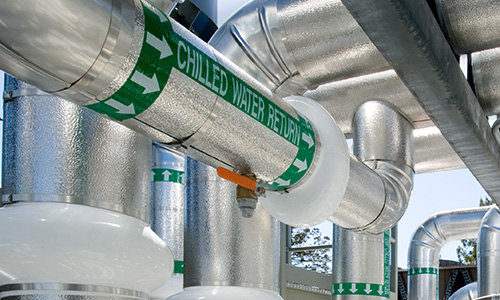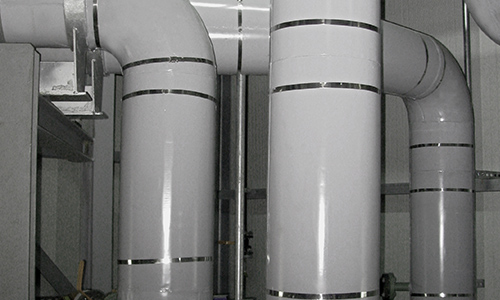The role of emissivity as a design factor
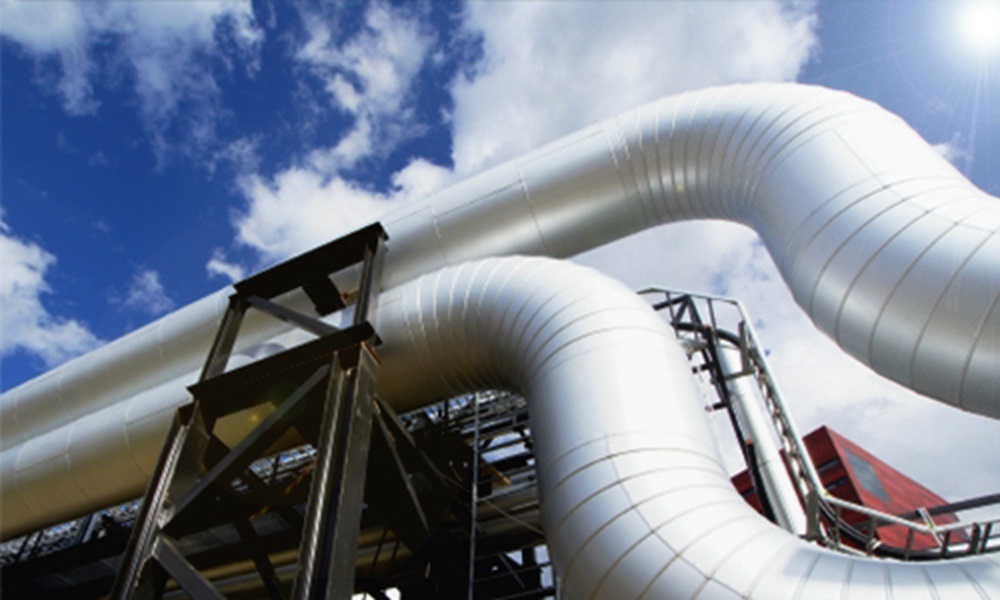
The emissivity of an insulation system has a large influence on process control, condensation control and personnel protection. The wide range of service temperatures and requirements for industrial applications create unique challenges for designers when specifying the correct insulation system.
Emissivity is defined as the effectiveness of a surface of a material in emitting energy as thermal radiation. The emissivity (ε) of a surface material is measured on a scale where a reflective material that is not emitting any radiant energy is rated at 0, and a nonreflective material that is emitting all of its radiant energy is rated at 1. In real world applications, both of these limits are impractical to attain, and measurements fall between these two extremes. A shiny piece of polished metal will have a low emissivity of around 0.07 whereas that same piece of metal, with a roughned and oxidized surface, will have a high emissivity of 0.80. If both materials are placed right next to eachother, they could have the same kinetic temperature but different apparant radiant temperatures when measured with a thermal radiometer because their emissivities are different.
When looking at insulation systems, one can state the emissivity of the insulation material and the emissivity of the jacketing or coating should be considered when specifying the insulation system. The emissivity can affect heat loss or gain, on hot and/or cold piping systems. As a result, when designing a system, one should consider how emissivity affects personnel protection, process control and condensation control. Below, we consider some of the challenges and solutions.
Designing for personnel protection on above ambient piping
When designing an insulation system for personnel protection, the surface temperature becomes a critical factor. The surface temperature can increase both from solar heat gain and from within as heat radiates outward from a hot pipe. The guidelines an insulation specifier should follow are:
- What is the highest ambient temperatures and lowest wind conditions to which the system will be subjected? Consider the ambient conditions which will create the hottest surface temperature, such as summer weather, with no wind and a metal jacketing material.
- What is the location of the piping, and will personnel come into contact with it? If the pipe is 6 meters (20 feet) above ground, or in an area that is inaccessible to personnel, there may be minimal human safety concern requiring the control of pipeline surface temperatures. Limited human presence may only require a sign or a fabricated guard. Frequent human contact will require a thorough investigation into the most efficient insulation system for personnel protection.
How does emissivity influence design for personnel protection?
The solution to achieve lower temperatures on hot pipes is to either use more insulation or to increase the emissivity of the jacketing or coating. If the solar load is high, a smooth metal jacketing (lower ε) reflects much of the radiant heat back into the system and creates surface temperatures that are too hot to touch. With a hot pipe, the energy flow is outward through the insulation and jacketing to the ambient temperature. Using a dull, textured finish will increase the emissivity and allow more heat to escape through the jacketing to the outside atmosphere, thereby lowering the surface temperature.
If the jacketing is highly reflective with a lower ε, the heat is reflected back into the system, thereby retaining the heat and increasing the surface temperature. By using a jacketing with a higher emissivity value, the amount of insulation needed to achieve the desired surface temperature can be decreased, saving money in the process. The tradeoff is that as more heat escapes from the system via the higher ε material, the more energy is required to maintain the system temperature.
DESIGNING FOR PROCESS CONTROL
Process control is usually a critical design consideration in many industrial environments and can be relevant with both hot and cold piping.
The guidelines that insulation specifiers should take into account include:
- What is the largest temperature gradient to which the system will be subjected?
- What are the temperature limitations of the process being controlled?
- What are the consequences in terms of the cost and safety of lost process control?
Process control and Hot piping systems
In industrial environments, where providing a uniform temperature to a heat transfer medium such as steam or heat transfer fluids is essential to achieve a proper chemical reaction, process control is critical.
Too much or not enough heat can completely change or even nullify the chemical reaction. For example, in the transport of liquid sulfur, if the temperature drops below its freezing point, the liquid becomes solid.
The time and energy required to transform the sulfur back into a liquid and flowing state is typically more expensive than the cost of replacing the transport system altogether.
Process control and cold piping systems
Process control is usually the most important guiding criteria when designing lower temperature insulation systems.
In the cold processes (except for chilled water piping in climate control systems), the maximum allowable heat transfer for process control purposes is 50 to 70 W/m (30 to 40 Btu/h/ft.).
The consequences of exceeding this limit are so costly that a safety factor of 4 is frequently employed, resulting in a design limitation of 12 to 18 W/m (8 to 10 Btu/h/ft.).
Emissivity as a design factor for process control
Depending on the temperature requirement of the process, the amount of heat transferred can be controlled by both insulation thickness and the emissivity of the jacketing that is specified.
Proper selection of jacketing materials should be incorporated in the design of insulation because it improves the overall performance of insulation rather than just being used for exterior protection and aesthetic use only.
As stated previously, a reflective metal finish decreases the emissivity and retains more heat within the system. A dull finish will increase the emissivity and thereby allow more heat to radiate from the system providing better performance in process control.
DESIGNING FOR CONDENSATION CONTROL
This is an issue that mainly affects cold piping only. Problems associated with condensation are wetness around the piping which can lead to thermal degradation and increased operating costs. Other issues are corrosion, the formation of mold and mildew and associated health risks, and dripping pipes that can damage ceilings, walls, floors and equipment. While insulation systems can be designed to limit or retard surface condensation, they cannot, in most cases, be designed to completely prevent condensation. In dry climates, the insulation system can help prevent condensation most of the time. However, from the moment when dew settles on the surface of the insulation systems, it is considered condensation.
In humid regions, it is not feasible from both a financial and practical standpoint to consider designing an insulation system to prevent condensation 100 percent of the time. The insulation thickness required to achieve this would be unrealistic.
As with personnel protection, the outer membrane of jacketing selected for limiting condensation plays an important role in providing proper condensation control. The surface temperature of the insulation system is the controlling factor in how often condensation will form and how long it will be present. Guidelines relating to condensation one should follow are:
- What are the average (not worst-case) summer ambient temperatures and wind conditions the system will be subjected to? We recommend using the average summer conditions rather than the worst-case summer weather conditions since worst-case conditions, especially in coastal regions, can be so extreme that the insulation thickness required to achieve condensation control becomes unrealistic.
- What is the operating temperature of the process? On a cryogenic pipeline, the insulation required to provide process control will usually exceed the insulation required to provide condensation control.
- How important is condensation control in the overall performance of the process? In many applications, condensation does not present as much of a process problem as it does an aesthetic problem.
The influence of emissivity as a design factor for condensation control
On cold pipes, a dull-finish jacketing with higher emissivity allows the cold to escape to the outside and results in a warmer outside temperature.
This is the goal so there is less of a difference between the pipe temperature and the ambient air, thereby reducing the likelihood of condensation.
A low-emissivity, reflective jacketing will reflect cold back into the system, thereby keeping the surface temperature cooler.
This increases the vapor drive toward the pipe and results in increase condensation potential.


